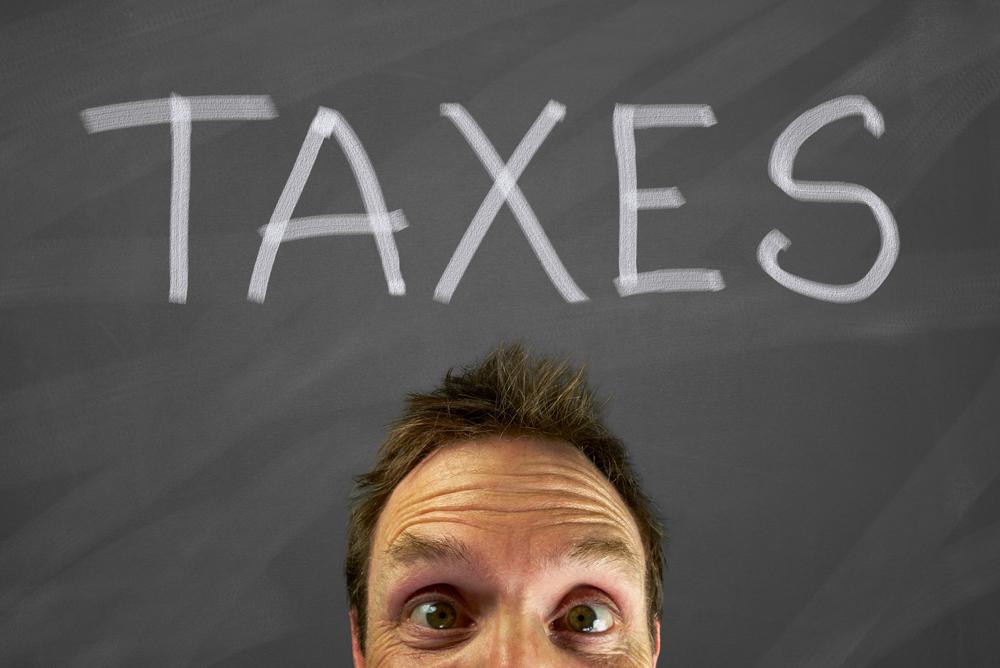MENU
Start
- Best Small Business Loans for 2024
- Businessloans.com Review
- Biz2Credit Review
- SBG Funding Review
- Rapid Finance Review
Our Recommendations
- 26 Great Business Ideas for Entrepreneurs
- Startup Costs: How Much Cash Will You Need?
- How to Get a Bank Loan for Your Small Business
- Articles of Incorporation: What New Business Owners Should Know
- How to Choose the Best Legal Structure for Your Business
Our Guides
- Business Ideas
- Business Plans
- Startup Basics
- Startup Funding
- Franchising
- Success Stories
- Entrepreneurs
Small Business Resources
Grow
- The Best Credit Card Processors of 2024
- Clover Credit Card Processing Review
- Merchant One Review
- Stax Review
Our Recommendations
- How to Conduct a Market Analysis for Your Business
- Local Marketing Strategies for Success
- Tips for Hiring a Marketing Company
- Benefits of CRM Systems
- 10 Employee Recruitment Strategies for Success
Our Guides
- Sales & Marketing
- Finances
- Your Team
- Technology
- Social Media
- Security
Small Business Resources
Lead
- Best Business Phone Systems of 2024
- The Best PEOs of 2024
- RingCentral Review
- Nextiva Review
- Ooma Review
Our Recommendations
- Guide to Developing a Training Program for New Employees
- How Does 401(k) Matching Work for Employers?
- Why You Need to Create a Fantastic Workplace Culture
- 16 Cool Job Perks That Keep Employees Happy
- 7 Project Management Styles
Our Guides
- Leadership
- Women in Business
- Managing
- Strategy
- Personal Growth
Small Business Resources
Find
- Best Accounting Software and Invoice Generators of 2024
- Best Payroll Services for 2024
- Best POS Systems for 2024
- Best CRM Software of 2024
- Best Call Centers and Answering Services for Busineses for 2024
Our Recommendations

Online only.
Self-Employed? Everything You Need to Know About Taxes
Table of Contents
Unlike W-2 employees, self-employed individuals do not have taxes automatically deducted from their paychecks. It’s up to them to keep track of what they owe and pay it on time.
Because taxes aren’t automatically deducted, take-home pay for the self-employed tends to be higher than it is for wage earners. However, unless you want the IRS to come knocking, it’s wise to set aside a chunk of those funds to cover your tax obligations.
Not only are government forms daunting, but learning the ropes of taxation can be truly complicated. If you’re filing as self-employed with the IRS, here are the basics of filing, paying and saving for taxes.
Who does the IRS consider self-employed?
Self-employed individuals, including freelancers, must take their taxes into account when setting their pricing, consider their tax burden in planning their finances for the year (e.g., saving money vs. reinvesting it in the business) and track their business expenses to deduct them at the end of the year, said Shoshana Deutschkron, former VP of communications and brand at Upwork.
“Business owners, whether they are self-employed freelancers or corporation owners, are responsible for complying with tax law with respect to their business,” said Deutschkron. “Financial literacy is a critical skill, [and] that literacy includes an understanding of taxation.”
The IRS classifies self-employed individuals into the following categories:
- Carrying on a trade or business as a sole proprietor or an independent contractor
- Being a member of a partnership that carries on a trade or business
- Being otherwise in business for yourself (including a part-time business)
When you’re self-employed, you must pay self-employment tax as well as income tax.
“You need to hold on to some of your money,” added Lise Greene-Lewis, CPA and tax expert for TurboTax. “You should pretend you don’t have that much money because your income varies so often. You have to think about paying your taxes.”
What is self-employment tax?
When you are employed by a business, Social Security and Medicare taxes are split between you and the employer. You pay a little under 8 percent of your gross income toward these taxes, and your employer matches that contribution.
When you don’t have an employer, you are responsible for the full 15.3 percent tax. This tax is split as follows: 12.4 percent goes toward Social Security, and 2.9 percent goes to Medicare. (It’s worth noting that only the first $160,200 earned in a year [that amount is subject to change each year] is subject to the Social Security tax. All wages above that are exempt.)
Self-employment taxes include both Social Security and Medicare taxes, but they do not include federal, state or local taxes.
The basics for filing self-employment taxes
Before you can determine your tax obligations, know your tax rate and consider whether your region requires separate city taxes. To figure out your rate, first calculate your net profit or net loss from your business. You can calculate this by subtracting business expenses from your business income. If your expenses are less than your income, the difference is net profit and is part of your income. If your expenses are more than your income, the difference is your net loss.
To prepare to file your taxes, you must first understand your tax rate as well as any state and local taxes that might apply to you. To determine your tax rate, you must first figure out your net profit or loss during the taxable period.
Next, if your earnings from self-employment exceed $400, you must file a Schedule C (Form 1040). Even if your net earnings from self-employment were less than $400, you still have to file a return if you meet any of the other requirements listed in Form 1040.
According to the IRS, self-employed taxpayers who expect to owe more than $1,000 in self-employment tax must make estimated tax payments four times during the year. You will need to use IRS Form 1040 to file these quarterly taxes.
How to calculate your self-employment tax
The self-employment tax rate for 2023 is 15.3 percent, which encompasses the 12.4 percent Social Security tax and the 2.9 percent Medicare tax. Self-employment tax applies to your net earnings. For 2023, only the first $160,200 of your earnings is subject to Social Security tax.
As mentioned earlier, to accurately calculate your self-employment tax, you need to calculate your net self-employment earnings for the year — which is your self-employment gross income minus your business expenses. Typically, 92.35 percent of your self-employment net earnings are subject to self-employment tax. Once you have your total net earnings from self-employment that are subject to tax, apply the 15.3 percent tax rate to determine your total self-employment tax.
If you’ve had a loss or just a little bit of income from self-employment for the year, there are two optional methods to calculate net earnings in the IRS Schedule SE.
To track your self-employment tax, you must calculate your net earnings (income minus business expenses) and apply the 15.3 percent to that amount.
How to file your taxes
Quarterly payments
If you expect to make quarterly estimated tax payments, use Form 1040-ES, Estimated Tax for Individuals, which contains a worksheet similar to Form 1040. Keep your return, as you will need the prior year’s return to fill out Form 1040-ES.
You can use the blank vouchers that are included with Form 1040-ES to mail your estimated tax payments, or you can pay online using the Electronic Federal Tax Payment System (EFTPS). If this is the first year you’re self-employed, you will need to estimate the amount of income you expect to earn for the year. See the IRS’ Estimated Taxes page for more information.
Annual return
To file your annual return, you will need to report your income (or loss) from a business you operated or a profession you practiced as a sole proprietor. To report your Social Security and Medicare taxes, you must file Schedule SE (Form 1040), Self-Employment Tax.
Use the income or loss calculated on Schedule C or Schedule C-EZ to determine the amount of Social Security and Medicare taxes you should have paid during the year. The instructions for Schedule SE may be helpful in filling out the form.
Self-employed individuals must pay quarterly taxes to avoid penalties during tax season.
Tax deductions and tax credits
When you’re looking for ways to save on your taxes, you might automatically jump to tax deductions and tax credits. But do you know the difference between the two?
Tax deductions
Since deductions lower your taxable income, they also lower the amount of taxes you owe by decreasing your tax bracket, not by lowering your actual taxes. There are standard deductions and itemized deductions:
- Almost everyone qualifies for the standard tax deduction. The deduction amount varies based on your filing status (e.g., single, married filing jointly, married filing separately or head of household), but everyone with the same filing status receives the same standard deduction amount.
- There are many possible itemized deductions, and the deduction amounts vary by individual. These are some of the most common itemized deductions:
- Certain medical and dental expenses above 7.5 percent of your adjusted gross income
- State income taxes
- State sales and local taxes
- Property taxes
- Charitable contributions
- Mortgage interest
- Student loan interest
There is a catch when it comes to itemized deductions, however. Each taxpayer is permitted to take only either their standard deduction or itemized deductions, whichever is higher, but not both.
If you’re transitioning from a full-time position, it’s important to pinpoint write-offs. Here are six ways to write off taxes:
- Startup costs: If you recently started a new business, you can deduct the startup costs from your tax bill. These include legal fees and marketing costs.
- Vehicle expenses: You can deduct up to $25,000 in vehicle expenses in addition to the mileage deduction for travel expenses.
- Home office deduction: You can deduct your home office if you maintain a space dedicated to work tasks only. To do so, measure the square footage of your home office to determine how much you can deduct for rent or mortgage payments, utilities and property taxes.
- Supplies and equipment: Any office supplies or equipment necessary for the functioning of your job can be deducted from your taxes.
- Social Security and Medicare taxes: Just like other employers, self-employed people must pay the full Social Security and Medicare tax. However, they can write off half of it at the end of the year.
- Health insurance premiums: If you are self-employed, you might be eligible to deduct healthcare costs for you and your family from your taxes.
“You may be surprised about what is tax-deductible,” said Greene-Lewis. “For example, advertising helps people make money, but it’s also a big deduction for people.”
Tax software can help you pinpoint write-offs you might otherwise miss, streamline the filing process and more easily identify your tax rate. It also saves your returns and, if nothing major changes, you can transfer last year’s tax info to the new tax year.
Tax credits
When it comes to tax credits, there are two types: refundable or nonrefundable:
- Nonrefundable tax credits allow you to reduce your tax liability to 0.
- Refundable tax credits can also reduce your tax reliability to 0. In addition, if there’s any amount left over from your refundable credit, you’ll receive the remaining credit balance.
Here’s an example of the difference between a tax credit and a tax deduction: If you’re in the 25 percent tax bracket, a $1,000 deduction lowers your taxes by $250. A $1,000 credit, however, lowers your tax bill by $1,000.
Which is better? If you had to choose, you’d probably prefer to receive a tax credit. Here is a list of possible tax credits:
- Earned income credit
- Additional child tax credit
- American opportunity credit
- Credit for federal tax on fuels
- Premium tax credit
- Health coverage tax credit
Being prepared come tax season
The key to being prepared for your tax obligations is to keep track of your expenses year-round. Don’t wait until the last minute to add up your expenses, Greene-Lewis said. She advised using an accounting software package to track what you’re earning and spending.
Business News Daily recommends QuickBooks as the best accounting software application for small businesses overall and Zoho Books as the best accounting solution for microbusinesses (sole proprietors, freelancers, consultants, etc.). For more suggestions and software reviews, see our best picks.
Self-employment tax FAQ
Do you pay self-employment tax on passive income?
The short answer is no. If your passive income is defined as such by the IRS, then it isn’t subject to self-employment tax (although it will likely be subject to income tax). There are two types of passive income according to the IRS. The first is a trade or business you do not actively participate in during the year. If you own or partially own a business that operates independently from you, then it is passive income. The second type is rental activities if you are not a real estate professional. You can actively participate in these activities and not be charged self-employment tax.
What kinds of jobs are exempt from paying the self-employment tax?
Any job that pays less than $400 a year is exempt. That is true regardless of the type of work done. A major exception applies to clergy who are employed by a congregation. Their entire income is exempt from self-employment tax. If a clergy member is paid by a church organization and not directly by the congregation, that exemption might not apply.
Do self-employed people pay higher taxes?
On average, self-employed people do pay higher taxes. The on-paper tax rate is higher because of the self-employment tax. This is an important consideration for anyone thinking about self-employment.
That said, there are circumstances that allow self-employed people to pay lower taxes. For the most part, this applies to business owners, who have access to tax breaks and write-offs. When leveraged correctly, those additional tax benefits can make up for the higher self-employment tax and lead to a lower total effective tax rate.
Why is my self-employment tax so high?
Self-employment tax seems high because it encompasses both Social Security and Medicare taxes. And while you would pay only half the amount of taxes as a W2 employee, you are paying the full 15.3 percent (plus federal, state and local taxes) as a self-employed individual.
Thankfully, there are opportunities for deductions and credits that can decrease the amount you owe.
What are the disadvantages of self-employment tax?
In short, the con of paying self-employment taxes is that you’re paying more than you would if you were a W-2 employee for another company. Especially if your business consists of just you, you’ll be responsible for paying the full 15.3 percent of your income.
However, self-employment gives you the freedom to earn more of a profit on your own terms. The flexibility and opportunities you reap from self-employment are often unmatched, making the self-employment tax just a drop in the bucket once your business takes off.
The information above is intended as a basic guide for self-employed individuals. If you are self-employed and have questions about your taxes, seek help from an accounting professional.
Sammi Caramela contributed to this article. Source interviews were conducted for a previous version of this article.














